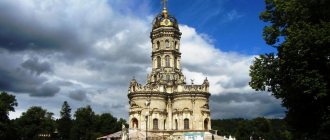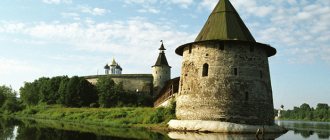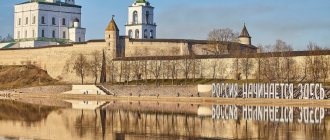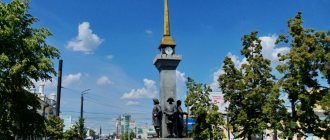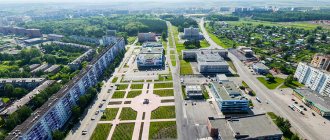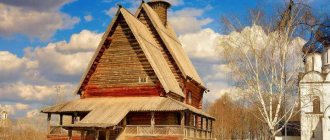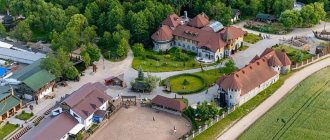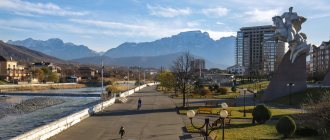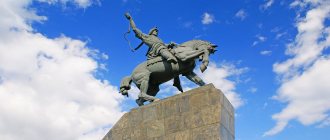Vladikavkaz is the capital of North Ossetia-Alania; a city with a population of 300 thousand, located on the border with Georgia. Vladikavkaz was founded in 1784 by decree of Empress Catherine II as a Russian defensive fortress. The name “Vladikavkaz” literally means “Own the Caucasus”.
At all times of its existence, Vladikavkaz has attracted travelers from all over Russia. Chekhov, Lermontov, Turgenev, Tolstoy, Tchaikovsky, Mendeleev and other famous people enjoyed their holidays here. The popularity of Vladikavkaz rests on “three pillars”: amazing mountain nature, preserved architecture of the 19th-20th centuries. and the friendliness of the local people.
So now we will take a walk around Vladikavkaz, explore its most beautiful and interesting sights, admire the massive mountains and taste the most delicious Ossetian pies!
Being a tourist in Vladikavkaz is very convenient, because all the main attractions of the city are located literally on two neighboring streets. There is no need to go somewhere or make long walks. Your walk through the center of Vladikavkaz will be continuously rich in cultural and historical sites, all with views of the majestic Caucasus Mountains.
Prospekt Mira in Vladikavkaz
Prospekt Mira as one big attraction is the historical pedestrian and tram avenue of Vladikavkaz. The avenue began to take shape at the beginning of the 19th century and to this day has retained a beautiful, holistic image with many interesting architectural objects.
Prospekt Mira in Vladikavkaz
Over the entire period, Mira Avenue managed to change several names: Aleksandrovsky Avenue, Proletarsky Avenue, Stalin Avenue. The avenue received its current name in 1961.
Prospekt Mira in Vladikavkaz
Almost all buildings on Mira Avenue have the status of an architectural monument. Let's look at some of them.
Prospekt Mira in Vladikavkaz
Cinema "Giant" was the largest cinema in Vladikavkaz in pre-revolutionary times. The building was built in 1913. During Soviet times, the Rodina cinema operated here.
Former cinema "Giant" in Vladikavkaz. Address: Mira Ave., 53
The trading building was built in 1910. There was a store on the ground floor with large display windows, and an accounting department on the second.
Trade building "Kirakozov-Oganov" in Vladikavkaz. Address: Mira Ave., 38
Literally around the corner on what is now Dzhanaeva Street there was a warehouse building for this company. The building still stands today, but is no longer used for storage.
Warehouse building "Kirakozov-Oganov" in Vladikavkaz. Address: st. Dzhanaeva, 20
House of merchant V. Kh. Andreev , built in 1883. From 1895 to this day, this building has been occupied by a library.
Mansion of merchant Andreev in Vladikavkaz. Address: Mira Ave., 34
Three gingerbread houses of the late 19th century, standing side by side: the house of the Tushmalov brothers (in the center), the house of I. Kolesnikov (left) and the Tuganov house (right).
House of the Tushmalov brothers in Vladikavkaz. Address: Mira Ave., 33
The Europe Hotel is spacious and comfortable by the standards of its time. The building was built in 1882 by order of the owner of one of the large trading houses E. S. Zipalov.
The former hotel "Europe" of the Zipalov brothers in Vladikavkaz. Address: Mira Ave., 24
The Imperial Hotel was built from 1894 to 1896. Despite the fact that at the beginning of the 20th century there were already 16 hotels in Vladikavkaz, the Imperial was the largest and most comfortable hotel in the city. Guests were accommodated on the second and third floors, and the lower floor was entirely occupied by a restaurant.
Hotel "Imperial" in Vladikavkaz. Address: Mira Ave., 19
The Mutual Credit Society is an Art Nouveau building built in 1902. On the ground floor there was a furniture store, a haberdashery and a printing house. And on the second floor there was a “Mutual Credit Society”, which was engaged in allocating capital for the local economy.
The building of the Mutual Credit Society in Vladikavkaz. Address: Mira Ave., 15
House of the merchant Oganov . The spectacular building in Art Nouveau style with eclectic elements was built in 1903. The customer was a local merchant Bogdan Grigorievich Oganov, who owned. The building was built for the son of a merchant, who, after studying in France, was returning to his homeland with his French wife. The building has retained its architectural appearance unchanged to this day.
Oganov trading house in Vladikavkaz. Address: Mira Ave., 12
Hotel "Paris" . Initially, this place was the location of the France Hotel, owned by I.V. Prokhorov. Later, the building was acquired by Alikpert Amir-Aliyev, who in 1880 rebuilt it to approximately the same condition as it is today, simultaneously renaming it “Paris”.
Former hotel "Paris" in Vladikavkaz. Address: Mira Ave., 10
Suddenly, an alien cube appeared in the middle of the modern buildings of the 19th century! Previously, there was a tobacco factory of Bagrat Semyonovich Vakhtangov here.
House of Public Services, Vladikavkaz. Address: Mira Ave., 13
In the center, a small Lenin Square adjoins Mira Avenue. Behind the monument to Lenin there is a theater building, so the square was originally called the theater square.
Lenin Square in Vladikavkaz
Next to Lenin you can see a beautiful Soviet fountain with a modern addition in the form of a dancing Soslan on the magic bowl of Uatsamong. According to mythology, the magic cup of Uatsamong itself rose to the lips of the hero telling the true story of his exploits and gave him an inexhaustible wonderful drink. But if the narrator told a lie, the cup was filled with a foul-smelling brew and drove the liar away.
Fountain "Dancing Soslan" in Vladikavkaz
Continuing the theme of monuments, it is worth immediately mentioning the monument to the policeman, installed in 2013, and the monument to the Ossetian poet, painter and sculptor Kosta Khetagurov, installed in 2010. Both of these monuments are located on Mira Avenue.
Monument to the policeman in Vladikavkaz
Monument to Kosta Khetagurov in Vladikavkaz
Another value of Mira Avenue is the green alley that divides the avenue into two parts. This alley is included in the register of natural monuments of North Ossetia. Throughout the alley, mostly linden trees grow, but there are also ash and acacia trees.
Green alley on Mira Avenue in Vladikavkaz
Main attractions of Vladikavkaz
There is a lot to admire in the city, which grew out of a powerful fortress founded in 1874, which His Serene Highness Prince Potemkin considered the key to the entire North Caucasus. You should start getting acquainted with it by visiting the most interesting places in Vladikavkaz, which are its recognizable symbols.
Monument to Issa Pliev
- Address: Pliev Square. Transport stop "TSUM".
The blessed land gave the world many brave warriors who glorified the homeland of the Alans. One of them is military general Issa Pliev, who during the Second World War commanded a cavalry-mechanized corps that terrified Hitler’s vaunted warriors. A monument to the great countryman appeared on the embankment of Vladikavkaz in 1998. The tallest of several stone trapezoidal steles symbolizing mountains is crowned with a sculpture depicting Pliev galloping on a horse. A burka develops behind the general’s shoulders, he spurred his faithful comrade in arms, who is already ready to jump over the Terek. The composition by sculptors B. Totiev and N. Khodov stunningly conveys the expression of the moment.
Table Mountain
This landmark was given to Vladikavkaz by nature itself. Table Mountain is considered one of the most picturesque peaks of the Rocky Range. It rises to 2,933 km and is clearly visible from anywhere in the city. The mountain, depicted on the coat of arms of the capital of North Ossetia and which has long become one of its main symbols, is especially beautiful at sunset. Be sure to come to the bridge over the Terek at this time to enjoy the stunning spectacle.
Sculpture "Fatima Giving the Sun"
- Address: st. Iristonskaya. Transport stop "Elkhotovskaya Street".
At the entrance from Beslan, tourists are greeted by another iconic landmark of Vladikavkaz. A cube is installed in the center of a small platform lined with slabs. A stylized sculpture of a beautiful Ossetian girl rises above it. A beauty in national clothes raises a solar disk with a mountain peak inscribed above her head. The townspeople affectionately call the elegant metal installation “Fatya”. According to the Nart epic, the Caucasus is considered the abode of the gods. Magnificent Fatima, as it were, gives a gift of sunlight from them to the residents of the city and its many guests.
Olginsky Bridge
- Address: st. Kotsoeva, 62. Transport stop “Nalchikskaya Street”.
In the spring, the capricious Terek floods widely, and its stormy waters easily carry away even serious crossings. Therefore, in the middle of the 19th century. city authorities decided to save the residents of Vladikavkaz from annual disasters by installing a permanent bridge. Cast iron elements were ordered in London and already in 1863 the engineering structure was opened. It owes its name to the wife of the then governor of the Caucasus, Olga Fedorovna. The amazingly elegant structure with a span of 52 m was one of the main attractions of the city for more than a century, but over time it began to deteriorate. Instead, a new reinforced concrete structure was erected nearby. Part of the spans of the old bridge were installed in the village of Suargomskoye and in the Kabansky Gorge, and you can admire two of them today near the Sunni mosque.
Fountain "Nart Soslan"
- Address: Lenin Square. Transport stop "Lenin Square".
A simple fountain on Lenin Square, where townspeople loved to make dates and important meetings, has existed since ancient times. However, at the beginning of this century, the authorities decided to replace it with something more original. So in 2007, Vladikavkaz acquired another iconic landmark. The dominant feature of the magnificent sculptural composition is the figure of the mighty hero Soslan, dancing with a sword in his hand on the bowl of Uatsomonga. According to legend, the wondrous vessel was filled with a drink that gave great strength if the Narts told true stories about their exploits. Otherwise, a fetid liquid would appear in it, infested with toads and lizards. Geysers shoot from nozzles at the base of the bowl and from the gaping jaws of fairy-tale creatures seated around the perimeter of the round pool.
Vladikavkaz tram
While on Mira Avenue, you can’t help but talk about the Vladikavkaz tram!
The first tram in Vladikavkaz was electric; it was launched in 1904. Belgian and German engineers were involved in laying narrow-gauge tracks and electrification.
Tram in Vladikavkaz
During Soviet times, the Vladikavkaz tram was completely reconstructed and switched to broad gauge. At the same time, the tram network expanded significantly.
Tram in Vladikavkaz
The entire tram fleet is represented by Tatras, brought from Magdeburg and Dresden.
Tram in Vladikavkaz
In 2022, a major overhaul of tram tracks began, many of which had not been repaired since 1995.
Tram in Vladikavkaz
The Vladikavkaz tram is almost like an attraction, because its route passes through the most beautiful central streets of Vladikavkaz.
Tram in Vladikavkaz
By the way, a trolleybus also ran in Vladikavkaz until 2011, until it was mothballed, like in many other Russian cities.
Central City Park named after. K. L. Khetagurova
Adjacent to Mira Avenue is the city park named after Kosta Hategurov - the oldest park in the North Caucasus. This park, just like the Mira Avenue alley, is included in the register of natural monuments of North Ossetia.
Entrance to the city park named after. Hategurova, Vladikavkaz
The park on this site was formed in the middle of the 19th century. Trees and shrubs were planted and a fountain was installed. At the beginning of the 20th century, the park was called “Monplaisir” in French, translated as “My pleasure”.
Park named after Hategurova, Vladikavkaz
At the same time, a system of ponds and a boat station were formed.
Pond in the park named after. Hategurova, Vladikavkaz
The water in the ponds (as well as in the Terek River) is an amazing turquoise color! Not at all like in the central part of Russia. Water in Vladikavkaz can be drunk straight from the tap.
Pond in the park named after. Hategurova, Vladikavkaz
There are several very nice wooden buildings preserved in the park. For example, this wonderful gazebo with Chinese motifs.
Gazebo in the park named after. Hategurova, Vladikavkaz
Since 2022, the park has undergone a major overhaul: tiles have been laid, lighting has been replaced (and in some cases), and shrubs have been planted along the pedestrian paths. All bridges and steps made of natural stone were left in place, they were simply restored.
The park carries a historical heritage, so they tried to recreate it as much as possible according to the old schemes. But, I must admit, there is clearly a lack of any modern public spaces in this park.
Park named after Hategurova, Vladikavkaz
Vladikavkaz Park named after. Hategurova is conventionally divided into upper and lower parts. Unfortunately, during our visit, construction work was in full swing in the lower part of the park, and the entrance there was closed. It was possible to view this part of the park only from the neighboring hill.
The lower part of the park named after. Hategurova, Vladikavkaz
The lower part of the park named after. Hategurova, Vladikavkaz
Where to take your child in Vladikavkaz?
Young tourists traveling around the Caucasus with their parents will not be bored in the colorful city. Vladikavkaz will provide them with the opportunity to choose entertainment to their taste. A lot of bright impressions are guaranteed for children.
Zoo
- Opening hours: daily, from 8:00 to 19:00.
- Ticket price: adult 70 rubles, children 50 rubles.
- Address: Costa Avenue, 30. Railway station "Eternal Flame".
A visit to a small but very colorful zoo can delight any child. And the point is not only that during the excursion you can see representatives of the fauna of the Caucasus and exotic animals. The staff of the institution tries to do everything to make the children like it here. They are invited to play with zoo pets, ride a pony and camel, and take part in a variety of events. Thus, on Tiger Day, striped predators are presented with a delicious chicken cake. Most animals can be treated to special food that is sold at the zoo.
Toy railway
- Opening hours: daily, from May to October inclusive.
- Ticket price: adult 100 rubles, children 50 rubles.
- Telephone.
- Website: https://www.dzd-ussr.ru/towns/vladikavkaz
- Address: Costa Avenue, 30. Transport stop “Russian Railways named after. Tereshkova."
The children's railway, which has existed for 50 years, enjoys constant popularity among citizens and guests of the city. Visitors will enjoy an exciting 2.2 km journey through the picturesque park, during which stops will be made at the Eternal Flame station, at the obelisk to the heroes of the Second World War and on the Camp platform. The conductors, conductors and drivers of the Ossetia train are schoolchildren who attend a club under the management of the North Caucasus Railway.
Park named after K. Khetagurova
- Address: Mira Avenue. Transport stop "Freedom Square".
It’s not difficult to have a great time with the whole family in the central city park, established back in 1830. Walking along its magnificent alleys, you can admire elegant sculptures, fabulous installations on the theme of the national Ossetian epic, elegant Swan and Cupid fountains, mysterious grottoes, made of rock. It’s worth stopping at the pond to feed the ducks bread crumbs. Teenagers will be able to do workout classes and play mini golf. There are swings and rides for kids.
Vladikavkaz embankment
From the city park named after. Khetagurova we go out to the embankment.
The embankment of the Terek River is the calling card of Vladikavkaz. Its bridges offer the most beautiful postcard views of the city, and along its banks are the most iconic sights.
Embankment of the Terek River in Vladikavkaz
The Terek is a real mountain river: fast, playful, of a magnificent turquoise hue. It originates on the slopes of the Main Caucasus Range and flows into the Caspian Sea.
Embankment of the Terek River in Vladikavkaz
There are about 10 bridges across the Terek throughout Vladikavkaz. One of them is the Kladki pedestrian bridge, leading out of the city park. Historically, since the 19th century, wooden walkways were laid at this place, which every spring turned into a place of increased danger. And finally, in 1939, instead of wooden masonry, a normal pedestrian bridge was built.
Pedestrian bridge Kladki in Vladikavkaz
In 1958, the 4-span Cast Iron Bridge, located just upstream, was dismantled. Two spans of the dismantled bridge were installed instead of the strictly pedestrian Kladki bridge.
From the pedestrian bridge you can see the saddest abandoned place in Vladikavkaz. Construction of the building began in 2004, and two years later the court declared the construction illegal, since the object was located in a protected natural zone, and ordered its demolition. However, the court decision was not implemented. Since then, the concrete unfinished building and the surrounding area have been disfiguring the appearance of the embankment in the tourist center itself for 15 years.
Pedestrian bridge Kladki in Vladikavkaz
An abandoned high-rise building is not the only problem on the Vladikavkaz embankment. Almost the entire pedestrian and promenade area is obsolete and is in dire need of restoration.
Old concrete fence along the embankment in Vladikavkaz
Embankment in Vladikavkaz
Along the entire embankment there is not a single descent to the water, and the view of the river is blocked by a solid concrete fence. With such an abundance of natural beauty, it was necessary to try to create benches overlooking the asphalt! ))
Embankment in Vladikavkaz with a view of the concrete fence
But let's digress from the quality of the embankment and return to the sights that can be seen here. And let's start with the Sunni mosque.
Sunni mosque
For the most part, Ossetians are Orthodox Christians. However, despite this, the first place among religious attractions is occupied by a Muslim mosque - the Sunni Mosque (or also called the Mukhtarov Mosque).
Sunni mosque (or Mukhtarov mosque) in Vladikavkaz. Address: st. Kotsoeva, 62
The mosque was built from 1900 to 1908. The bulk of the expenses was borne by the Azerbaijani millionaire oil industrialist Murtuza Mukhtarov, after whom the mosque is named. The mosque was also called Tatar and New.
Sunni mosque (or Mukhtarov mosque) in Vladikavkaz
In Soviet times, they wanted to blow up the mosque, but a Tatar company stood guard with weapons in their hands. Then the authorities gave the building the status of an architectural monument, so the mosque, even though it was built quite young, has survived to this day.
Sunni mosque (or Mukhtarov mosque) in Vladikavkaz
The mosque housed an anti-religious museum, a cultural center, a workers' club, and even a local history museum. Now it is a functioning mosque again.
Sunni mosque (or Mukhtarov mosque) in Vladikavkaz
The mosque stands on the left bank of the Terek River in the tourist epicenter. From the pedestrian bridge there was a magnificent view: a small fairy-tale castle with two turrets against the backdrop of the Caucasus Mountains. In 2011, the construction of a multi-storey residential building was completed right behind the mosque, and since then the magnificent view has disappeared.
Sunni mosque (or Mukhtarov mosque) in Vladikavkaz
In general, high-rise buildings are a problem for the entire Vladikavkaz embankment. This is what the place looked like before the house was built.
Sunni mosque (or Mukhtarov mosque) in Vladikavkaz (old photo)
Sculptural composition “Return of leopards to the Caucasus”
After a 10-minute walk from the Sunni mosque upstream, you can see the modern sculptural composition “The Return of Leopards to the Caucasus.”
As is known, the Central Asian leopard (or, as it is also called, the Caucasian leopard) was completely exterminated in the Caucasus back in the 1960s. Since 2006, a program to restore the population of Central Asian leopards has been launched in the North Caucasus. In 2016, three leopards were released into the wild, and three more in 2022. In honor of this event, the sculptural composition “Return of Leopards to the Caucasus” was installed on the Terek embankment near the Chugunny Bridge.
Sculptural composition “Return of leopards to the Caucasus”
Some of the released leopards have already died (one as a result of an unsuccessful hunt, the second at the hands of poachers), but the program to restore the leopard population continues.
The golden leopard (or Caucasian leopard) against the backdrop of snow-capped mountains has been emblazoned on the coat of arms of North Ossetia since ancient times.
The bridge, next to which the composition “Return of Leopards to the Caucasus” is installed, is also decorated with figurines of leopards.
Leopard (Caucasian leopard) on the Chugunny bridge in Vladikavkaz
And even one of the Vladikavkaz trams was repainted leopard print.
Tram "Guardian of the Mountains - the Mighty Leopard" in Vladikavkaz
Monument to Issa Pliev
A little further from the tram-car Cast Iron Bridge there is a panoramic view of the continuation of the embankment and the monument to the military leader and army general, Twice Hero of the Soviet Union - Issa Pliev.
The general is depicted on a horse, as if galloping through the mountains; and again another high-rise building in the background spoiled the postcard view of the attraction.
Embankment of the Terek River in Vladikavkaz
A dynamic and large-scale monument to Issa Pliev was erected in 1997.
Monument to Issa Pliev in Vladikavkaz
We cross the Cast Iron Bridge to the opposite bank. Of course, the Cast Iron Bridge is no longer cast iron, but reinforced concrete, it’s just that the name of the old (previous) bridge is too firmly entrenched in the vocabulary of Vladikavkaz residents.
In 1863, a cast iron bridge was installed literally a few meters from the current reinforced concrete bridge. It was made in England specifically by order of the authorities. In 1904, tram traffic was opened on the Chugunny Bridge by Belgian and German engineers. After 50 years, the Cast Iron Bridge needed reconstruction, and a new reinforced concrete bridge was built to replace it.
"Cast Iron Bridge" in Vladikavkaz
By the way, the disassembled cast iron structure was not disposed of. Two spans are now used as the pedestrian post we saw earlier. And one more span was taken to the Koban Gorge and the Suargom Gorge, where they are also used to this day.
View of the Caucasus Mountains from the Cast Iron Bridge
Just behind the Chugunny Bridge is a powerful Soviet building built in the 1980s. Initially, the building was built for the City Executive Committee; now it houses the administration of Vladikavkaz.
Administration of Vladikavkaz
The building was built on a square that was formed in the 19th century. At first this square was called Krasnoryadskaya, but in 1926 it was renamed after the revolutionary Semyon Mitrofanovich Shtyb.
Administration of Vladikavkaz
Vladikavkaz fortress
Across the road from the administration you can see another tourist attraction of Vladikavkaz - an improvised fortress!
The history of Vladikavkaz began in 1784, when a defensive fortress was built on the right bank of the Terek River in front of the Main Caucasus Range. The hasty foundation of the fortress was inextricably linked with the signing of the Treaty of Georgievsk on the entry of Georgia under the protection of Russia and with the beginning of the construction of the Georgian Military Road. The main issue on the agenda is the security of communications between the Caucasus and Transcaucasia.
Vladikavkaz fortress
Unfortunately, the Vladikavkaz fortress has not survived to this day; only some fragments of the walls have survived. And the newly created wall, of course, should not be taken as something serious. Think of it as a cute backdrop for travel photo shoots.
The wall of the Vladikavkaz fortress and the monument to Dzaug Bugulov
Recreated wall of the Vladikavkaz fortress
Recreated wall of the Vladikavkaz fortress
If you want to see authentic fragments of the fortress wall, you can try to find them, for example, on Koltsova Street or on Tsagolov Street.
The real wall of the Vladikavkaz fortress
In 2006, a monument to Dzaug Bugulov was erected in front of the improvised fortress. According to legend, Dzaug Bugulov was the founder of the first settlement (village), next to which a fortress was built a little later.
Monument to Dzaug Bugulov in Vladikavkaz
Armenian Church in Vladikavkaz
Just behind the wall is the Armenian Church.
The Armenian Church of St. Gregory the Illuminator is the only Armenian temple in Vladikavkaz. It is located on the right bank of the Terek River next to the Olginsky (Cast Iron) Bridge.
Armenian Church of St. Gregory the Illuminator in Vladikavkaz. Address: st. Armenian, 1
The first Armenian church appeared in Vladikavkaz in 1843. It was a small wooden church, which very soon ceased to accommodate everyone. From 1864 to 1868 A new stone church was built on the site of the old church. A little later, the church was expanded, a bell tower was added, and it acquired its current appearance.
Armenian Church of St. Gregory the Illuminator in Vladikavkaz
During Soviet rule, the Armenian church was the only religious institution that did not close. The church was a haven for the entire Christian population of Vladikavkaz.
Armenian Church of St. Gregory the Illuminator in Vladikavkaz
In 1960, the temple received the status of a state-protected monument.
Armenian Church of St. Gregory the Illuminator in Vladikavkaz
Church of the Nativity of the Blessed Virgin Mary in Vladikavkaz
Now let's move a little away from the embankment to see another fairly significant historical building.
The Church of the Nativity of the Blessed Virgin Mary is the oldest Orthodox church in Vladikavkaz. Its history begins with a small wooden church, which was erected on Ossetian Hill in 1815. Because of its location, the church was often called Ossetian by the people. Later, the church was rebuilt several times in stone.
Church of the Nativity of the Blessed Virgin Mary in Vladikavkaz. Address: st. Rozhdestvenskaya, 22
In Soviet times, they wanted to demolish the church, but the parishioners, the rector and clergy managed to defend the building, thanks to which the Nativity Church has survived to this day in its original form.
Church of the Nativity of the Blessed Virgin Mary in Vladikavkaz
From Ossetian Hill there was a magnificent view of Vladikavkaz and the endless chain of the Caucasus Mountains. But here, too, the thoughtlessly plunging high-rises ruined everything!
View of Vladikavkaz from Ossetian Hill
View of Vladikavkaz from Ossetian Hill
Where to go in Russia: Vladikavkaz
June 26, 2020
Attention! This material, without any jokes, will make you buy a ticket to Vladikavkaz and convince you that you do not need either the Turkish coast or Africa, but only North Ossetia. The most complete, most interesting story about Vladikavkaz and the surrounding area and a proven route for a weekend trip - for the first time on the blog. Whoever did not save it is his own fault!
